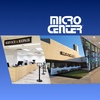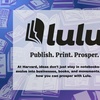HUDS uses the data to measure "patron velocity"-in other words, to get an accurate picture of how many students are eating in a given location at a given meal. Then, it modifies the number of meals prepared to best reflect the demand.
"Meal cards allowed us to view demographic trends in the dining halls, so we could budget better," Mayer says. "Before meal cards, such counts were inaccurate."
BoardPlus, the program which gives students $50 each semester to use at select dining locations, was the second phase in card services. Its goal, Mayer says, is to afford students greater flexibility in what and where they eat.
The third phase, Crimson Cash, was another effort by HUDS to make College life easier, according to Mayer and Cross.
"We're in the convenience business," Mayer says, "and for the critical mass, this [Crimson Cash program] was the preferred way to do things."
Collective Bargaining
The Crimson Cash program was initially an attempt to ease administrators' burdens financially, say its directors.
According to Mayer, the program is a response to Harvard's decentralized method of dealing with service providers.
"Before the program began, the Houses all had different arrangements with vendors in terms of their vending machines, for sodas and for snacks," he explains.
Mayer says the individual "landlords" who dealt with vendors-in the College's case, House superintendents and building managers-were at a disadvantage financially.
"Crimson Cash consolidated buying power and helped the University get back more money by being able to take advantage of a partnership," he continued.
Even so, Mayer says the revenues from Crimson Cash thus far are "quite nominal."
Cross adds that the money in the Crimson Cash system is not earning any interest.
Mayer explains that whatever money is earned goes back into developing and making improvements to the young program.
"We negotiate a percentage of all sales, two or three percent, depending on the size and scope of the buy, and the commissions mostly go back into the program for upkeep and start-up costs," he says.
Read more in News
Hockey Today












